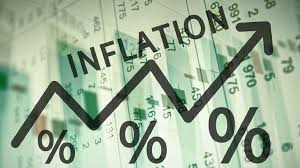The steady rise in the general prices of food, transportation and housing has led to an inflation of 7.8% in January 2020.
This means that between January last year and the same period this year the prices of good and services recorded an increase of 7.8%. Comparing the latest figure to December 2019 however, shows a marginal decline of 0.1 percentage point.Â
Government Statistician Prof Kwabena Anim at the media briefing to explain the factors responsible for January's inflation.Â
"The main components of the January 2020 inflation rate is led by food and non-alcoholic beverages which is taking ...... to save the entire inflation rate followed by transport and housing. We go further to do the disaggregation by sharing with you the major drivers for the month on month inflation so the 1.4 that we shared with you, food and non-alcoholic beverages taking about 70% if it. So out of the 1.4 months on month inflation, 0.99 is attributed to food and non-alcoholic beverages. We do the disaggregation base on two main component food and non-food inflation and also locally produced and imported items.
On the regional level, the Central Region recorded the highest inflation of 10% higher than the national average, the Ashanti Region recorded the lowest inflation rate of 5.6% compared to the national average.
Ghana's inflation rate jumps to four-month high
Ghana’s inflation rate rose to the highest level in four months in November as the cedi continued to weaken.
Annual inflation quickened to 8.2% in from 7.7% in October, Government Statistician Samuel Kobina Annim told reporters in the capital, Accra, on Wednesday. The median estimate of three economists in a Bloomberg survey was 7.6%. Prices rose 0.7% in the month.
Key Insights
This is the first time since the statistics office started using a new base year for the consumer price index from August that inflation is above the midpoint of the central bank’s target band of 6% to 10%. The agency hasn’t provided revised price-growth data for the months before August, complicating the calculation of longer-term trends.
The central bank said in November it sees inflation staying inside its target range, barring any unforeseen shocks. The cedi extended losses after the central bank held its key rate at 16% last month, taking its fall against the dollar to 13.7% for the year. That is adding to price pressures.
 Â





